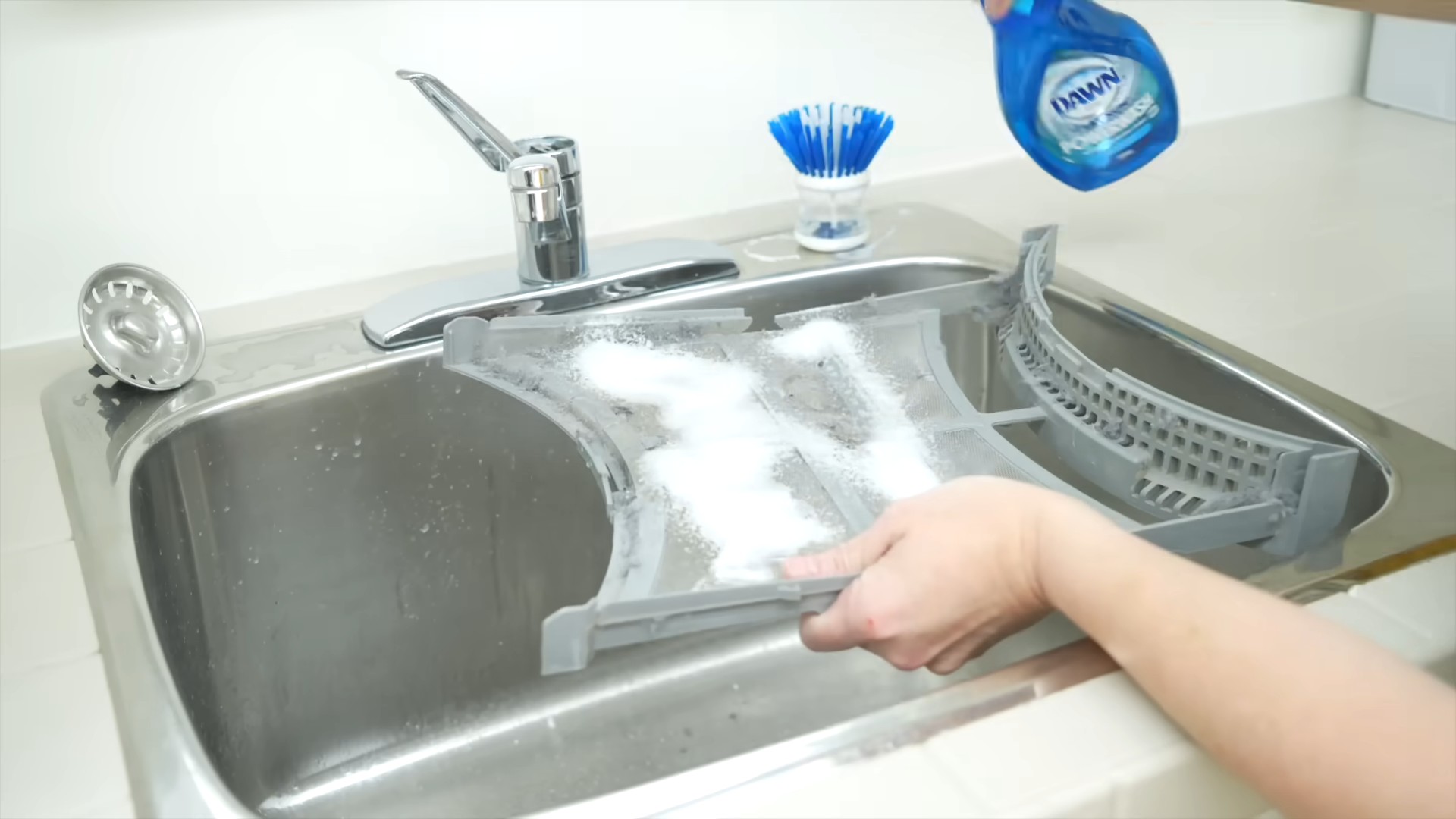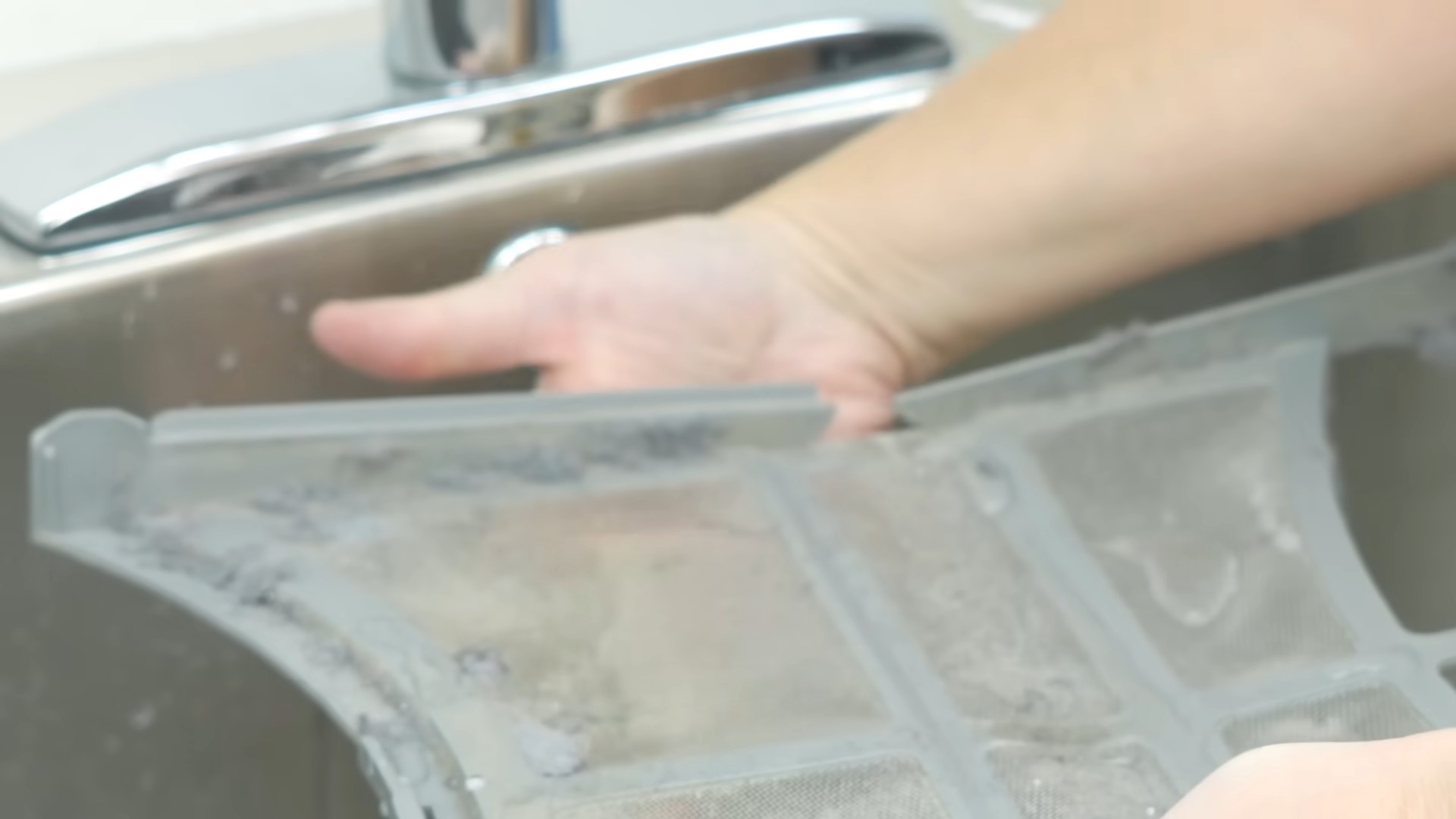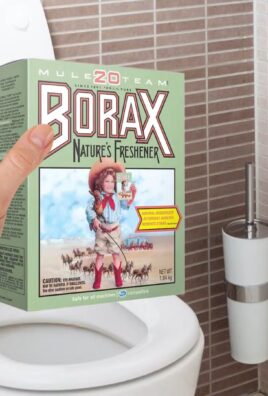Remove Laundry Lint Effectively and say goodbye to those pesky fuzzballs clinging to your favorite clothes! Have you ever pulled a seemingly clean shirt out of the dryer, only to find it covered in a layer of lint that makes it look older and worn? I know I have, and it’s incredibly frustrating. But don’t worry, you’re not alone! Lint is a common laundry problem, and thankfully, there are some easy and effective DIY tricks you can use to combat it.
While we might think of lint as a modern annoyance, the struggle against fabric debris is actually quite old. Historically, people have used various methods to keep their clothes looking their best, from brushing with natural fibers to carefully picking off stray threads. Today, we have more efficient solutions, but the goal remains the same: to maintain the appearance and longevity of our garments.
Why is it so important to remove laundry lint effectively? Beyond aesthetics, excessive lint can actually damage your clothes over time, weakening the fibers and causing them to wear out faster. Plus, a lint-filled dryer is a fire hazard! This DIY guide will provide you with simple, cost-effective methods to tackle lint buildup in your washing machine, dryer, and on your clothes, saving you money and keeping your laundry room safe. I’m excited to share these tips with you, so let’s get started!

DIY: Conquer Laundry Lint Like a Pro!
Okay, let’s face it: laundry lint is the bane of every clean clothes enthusiast’s existence. It clings to dark fabrics, makes your favorite sweaters look old and worn, and generally just makes you feel like you’re losing the battle against fuzz. But fear not! I’m here to share my tried-and-true methods for removing laundry lint effectively, so you can say goodbye to those pesky fibers and hello to fresh, lint-free clothes.
Understanding the Enemy: Why Lint Happens
Before we dive into the solutions, let’s quickly understand what we’re dealing with. Lint is essentially tiny fibers that break off from your clothes during washing and drying. Natural fibers like cotton and wool are more prone to shedding than synthetics, but even your polyester blends contribute to the lint buildup. The agitation of the washing machine and the heat of the dryer loosen these fibers, which then cling to other garments.
The Arsenal: Tools You’ll Need
To wage war on lint, you’ll need a few key weapons in your arsenal. Don’t worry, most of these are probably already lying around your house!
* **Lint Roller:** This is your everyday, go-to lint remover. Opt for a sticky roller with strong adhesive for best results.
* **Fabric Shaver:** For those stubborn pills and fuzzballs that lint rollers can’t handle, a fabric shaver is a lifesaver.
* **Pumice Stone (for sweaters):** Yes, you read that right! A pumice stone can gently remove pills from sweaters.
* **Packing Tape:** A surprisingly effective alternative to a lint roller, especially for larger areas.
* **Rubber Gloves:** These create static electricity that attracts lint like a magnet.
* **White Vinegar:** A natural fabric softener that helps prevent lint from clinging to clothes in the first place.
* **Baking Soda:** Helps loosen lint and freshen up your laundry.
* **Mesh Laundry Bags:** Protect delicate items and reduce lint shedding.
* **A Good Washing Machine and Dryer:** A well-maintained machine is less likely to produce excessive lint.
Phase 1: Preventing Lint in the First Place
The best way to deal with lint is to prevent it from forming in the first place. Here’s how:
* **Sort Your Laundry:** Separate light and dark colors, and more importantly, separate lint-shedding fabrics (like towels and fleece) from lint-attracting fabrics (like corduroy and velvet). This is crucial!
* **Turn Clothes Inside Out:** This reduces friction and minimizes fiber shedding during washing.
* **Use Mesh Laundry Bags:** Protect delicate items like sweaters and lingerie from excessive friction.
* **Don’t Overload Your Washing Machine:** Overcrowding prevents clothes from rinsing properly, trapping lint.
* **Use White Vinegar as Fabric Softener:** Add 1/2 cup of white vinegar to your washing machine’s fabric softener dispenser. It’s a natural fabric softener and helps prevent lint buildup.
* **Add Baking Soda to Your Wash:** Add 1/2 cup of baking soda to your wash cycle to help loosen lint and freshen your clothes.
* **Clean Your Lint Filter Regularly:** This is the most important step! A clogged lint filter reduces dryer efficiency and can even be a fire hazard. Clean it *after every load*.
Phase 2: Removing Lint from Clothes
Okay, so you’ve done your best to prevent lint, but it still happens. Here’s how to tackle it:
Method 1: The Classic Lint Roller
1. **Lay the garment flat on a clean surface.** This will give you a good, even surface to work on.
2. **Start at the top and roll downwards.** Apply gentle pressure and roll the lint roller over the affected areas.
3. **Replace the sheet when it’s full of lint.** Don’t try to squeeze every last bit of stickiness out of it – a fresh sheet is much more effective.
4. **Repeat as needed.** For heavily linted garments, you may need to go over them several times.
Method 2: The Mighty Fabric Shaver
1. **Lay the garment flat on a clean surface.** Again, a flat surface is key.
2. **Turn on the fabric shaver.** Most fabric shavers have different settings for different fabrics. Start with the lowest setting and increase as needed.
3. **Gently glide the fabric shaver over the pilled areas.** Avoid pressing too hard, as this can damage the fabric.
4. **Empty the lint container regularly.** Fabric shavers fill up quickly, so keep an eye on the container.
5. **Repeat as needed.** You may need to go over the same area several times to remove all the pills.
Method 3: The Pumice Stone Sweater Savior
Important Note: This method is only suitable for sturdy knit sweaters. Test it on an inconspicuous area first to make sure it doesn’t damage the fabric.
1. **Lay the sweater flat on a clean surface.**
2. **Gently rub the pumice stone over the pilled areas in a circular motion.** Use light pressure and avoid rubbing too hard.
3. **Periodically brush away the removed pills with your hand.**
4. **Repeat as needed.** Be careful not to overdo it, as this can thin the fabric.
Method 4: The Packing Tape Power Play
1. **Wrap a piece of packing tape around your hand, sticky side out.**
2. **Press the tape onto the linted area.**
3. **Peel the tape away, bringing the lint with it.**
4. **Repeat with a fresh piece of tape as needed.** This is a great option for larger areas or for removing pet hair.
Method 5: The Rubber Glove Grab
1. **Put on a pair of rubber gloves.**
2. **Lightly dampen the gloves with water.**
3. **Rub your hands over the linted garment.** The static electricity created by the rubber will attract the lint.
4. **Rinse the gloves periodically to remove the collected lint.**
Phase 3: Dealing with Lint in Your Washing Machine and Dryer
Lint doesn’t just cling to your clothes; it also accumulates in your washing machine and dryer. Here’s how to keep them clean:
* **Clean Your Washing Machine Regularly:** Run an empty wash cycle with hot water and 1 cup of white vinegar every month to remove lint buildup. Some washing machines have a self-cleaning cycle, which you can use instead.
* **Clean Your Dryer Vent:** This is crucial for fire safety! Disconnect the dryer vent from the back of the dryer and use a vacuum cleaner to remove any lint buildup. You can also purchase a dryer vent cleaning kit with a long brush to reach deeper into the vent. Do this at least once a year, or more often if you dry a lot of lint-shedding fabrics.
* **Wipe Down Your Dryer Drum:** After each load, wipe down the inside of your dryer drum with a damp cloth to remove any remaining lint.
Extra Tips and Tricks
* **Static Cling Spray:** A quick spritz of static cling spray can help prevent lint from clinging to clothes.
* **Dryer Sheets:** While some people swear by dryer sheets, they can actually contribute to lint buildup over time. If you use them, be sure to clean your lint filter regularly.
* **Air Drying:** When possible, air dry your clothes to reduce lint shedding.
* **Invest in Quality Laundry Products:** Using a good quality detergent can help prevent fiber breakdown and reduce lint.
By following these tips and tricks, you can effectively remove laundry lint and keep your clothes looking their best. Happy laundering!

Conclusion
So, there you have it! Removing laundry lint effectively doesn’t require expensive gadgets or harsh chemicals. This simple, DIY trick, using items you likely already have at home, is a game-changer for keeping your clothes looking their best and extending the life of your washing machine and dryer. We’ve shown you how to create a lint-busting powerhouse with just a few easy steps.
Why is this a must-try? Because it’s cost-effective, eco-friendly, and incredibly efficient. Think about all the money you’ll save on dryer sheets and lint rollers. Plus, you’ll be reducing waste by avoiding disposable products. But the real magic lies in the results: cleaner clothes, a more efficient dryer, and a reduced risk of fire hazards.
Don’t be afraid to experiment with variations! For instance, if you’re dealing with particularly stubborn lint, try adding a cup of white vinegar to your washing machine’s rinse cycle. Vinegar acts as a natural fabric softener and helps to loosen lint fibers. Another option is to use a microfiber cloth instead of a sponge for wiping down your dryer drum. Microfiber is excellent at trapping even the tiniest particles. You can also try using a pumice stone gently on heavily linted sweaters or blankets, but be extremely careful and test a small, inconspicuous area first.
We understand that every washing machine and dryer is different, and the type of fabric you wash will also influence the amount of lint produced. That’s why we encourage you to adapt this DIY trick to suit your specific needs. Maybe you need to repeat the process a couple of times for heavily linted loads, or perhaps you find that a slightly damp sponge works better than a completely dry one. The key is to experiment and find what works best for you.
Ready to say goodbye to pesky lint? We’re confident that this DIY method will become an indispensable part of your laundry routine. It’s a simple, effective, and sustainable way to keep your clothes looking their best and your appliances running smoothly.
Now, it’s your turn! Give this DIY trick a try and share your experience with us. Let us know in the comments how it worked for you, what variations you tried, and any tips you discovered along the way. We’re eager to hear your success stories and learn from your experiences. Together, we can conquer the lint monster and enjoy cleaner, fresher laundry!
Frequently Asked Questions (FAQ)
1. How often should I use this DIY lint removal trick?
The frequency depends on how often you do laundry and the types of fabrics you typically wash. If you wash a lot of fleece, towels, or other lint-producing materials, you might want to use this trick every few loads. As a general guideline, aim to clean your washing machine and dryer using this method at least once a month. For households with heavy laundry loads, consider doing it every two weeks. Regular maintenance will prevent lint buildup and ensure optimal performance of your appliances.
2. Will this DIY trick work on all types of washing machines and dryers?
This method is generally safe and effective for most standard washing machines and dryers, including both top-loading and front-loading models. However, always consult your appliance’s manual for specific cleaning instructions and recommendations. For high-efficiency (HE) washing machines, be sure to use HE-compatible detergents and avoid using too much soap, as excess suds can contribute to lint buildup. If you have any concerns about using this method on your specific appliance, contact the manufacturer or a qualified appliance repair technician.
3. What if I don’t have a sponge or microfiber cloth? Can I use something else?
While a sponge or microfiber cloth is ideal for wiping down the washing machine and dryer drum, you can use other absorbent materials in a pinch. A clean, damp towel or even a lint-free paper towel can work as a temporary substitute. However, avoid using anything that could leave behind its own lint or fibers, such as old rags or heavily textured cloths. For the dryer vent, a specialized dryer vent cleaning brush is highly recommended for thorough removal of trapped lint.
4. Is it safe to use vinegar or bleach in my washing machine for lint removal?
While white vinegar can be a helpful addition to your laundry routine, it’s important to use it correctly. Vinegar is a mild acid that can help to loosen lint fibers and soften fabrics. Add about one cup of white vinegar to your washing machine’s rinse cycle. Avoid using bleach for lint removal, as it can damage certain fabrics and may not be effective at removing lint buildup. Always follow the manufacturer’s instructions for using vinegar or other cleaning agents in your washing machine.
5. How do I clean the lint trap in my dryer?
Cleaning the lint trap is a crucial step in preventing lint buildup and maintaining dryer efficiency. After each load of laundry, remove the lint trap and clean it thoroughly. Use your fingers or a lint brush to remove any accumulated lint. If the lint trap is particularly dirty or clogged, you can wash it with warm, soapy water and allow it to dry completely before replacing it. A clogged lint trap can restrict airflow, causing your dryer to work harder and increasing the risk of fire.
6. My clothes still have lint on them after washing and drying. What am I doing wrong?
If you’re still experiencing lint issues despite using this DIY trick, there are a few potential causes. First, make sure you’re sorting your laundry correctly. Separate lint-producing fabrics (like towels and fleece) from lint-attracting fabrics (like dark-colored clothing). Second, avoid overloading your washing machine and dryer, as this can prevent proper cleaning and lint removal. Third, check your detergent. Some detergents can contribute to lint buildup, so consider switching to a different brand or using less detergent per load. Finally, ensure that your washing machine and dryer are properly maintained and cleaned regularly.
7. Can this DIY method help prevent dryer fires?
Yes, absolutely! One of the most significant benefits of removing laundry lint effectively is the reduced risk of dryer fires. Lint is highly flammable, and when it accumulates in your dryer vent, it can easily ignite. By regularly cleaning your lint trap and using this DIY method to remove lint from your washing machine and dryer drum, you’re significantly reducing the amount of flammable material in your appliances. This simple step can help to protect your home and family from the dangers of dryer fires.
8. What are some other ways to reduce lint in my laundry?
In addition to this DIY trick, there are several other things you can do to minimize lint in your laundry. Consider using fabric softener or dryer sheets, which can help to reduce static cling and prevent lint from sticking to your clothes. Avoid over-drying your clothes, as this can cause them to break down and produce more lint. Shake out your clothes before putting them in the washing machine and dryer to remove loose lint and debris. And finally, invest in high-quality laundry products and appliances that are designed to minimize lint buildup.
9. Is there a way to remove lint from clothes that are already covered in it?
Yes, there are several ways to remove lint from clothes that are already covered in it. A lint roller is a quick and easy solution for removing surface lint. For more stubborn lint, try using a fabric shaver or sweater comb to gently remove pills and fuzz. You can also try washing the clothes again with a cup of white vinegar in the rinse cycle. For delicate fabrics, consider using a soft-bristled brush to gently remove lint.
10. How does hard water affect lint production in laundry?
Hard water, which contains high levels of minerals like calcium and magnesium, can exacerbate lint production in laundry. The minerals in hard water can react with detergents, forming a residue that clings to fabrics and traps lint. This can result in clothes that feel stiff, look dull, and are covered in lint. If you have hard water, consider using a water softener or adding a laundry booster to your wash to help remove minerals and prevent lint buildup. You may also need to use more detergent to achieve the same level of cleanliness.




Leave a Comment